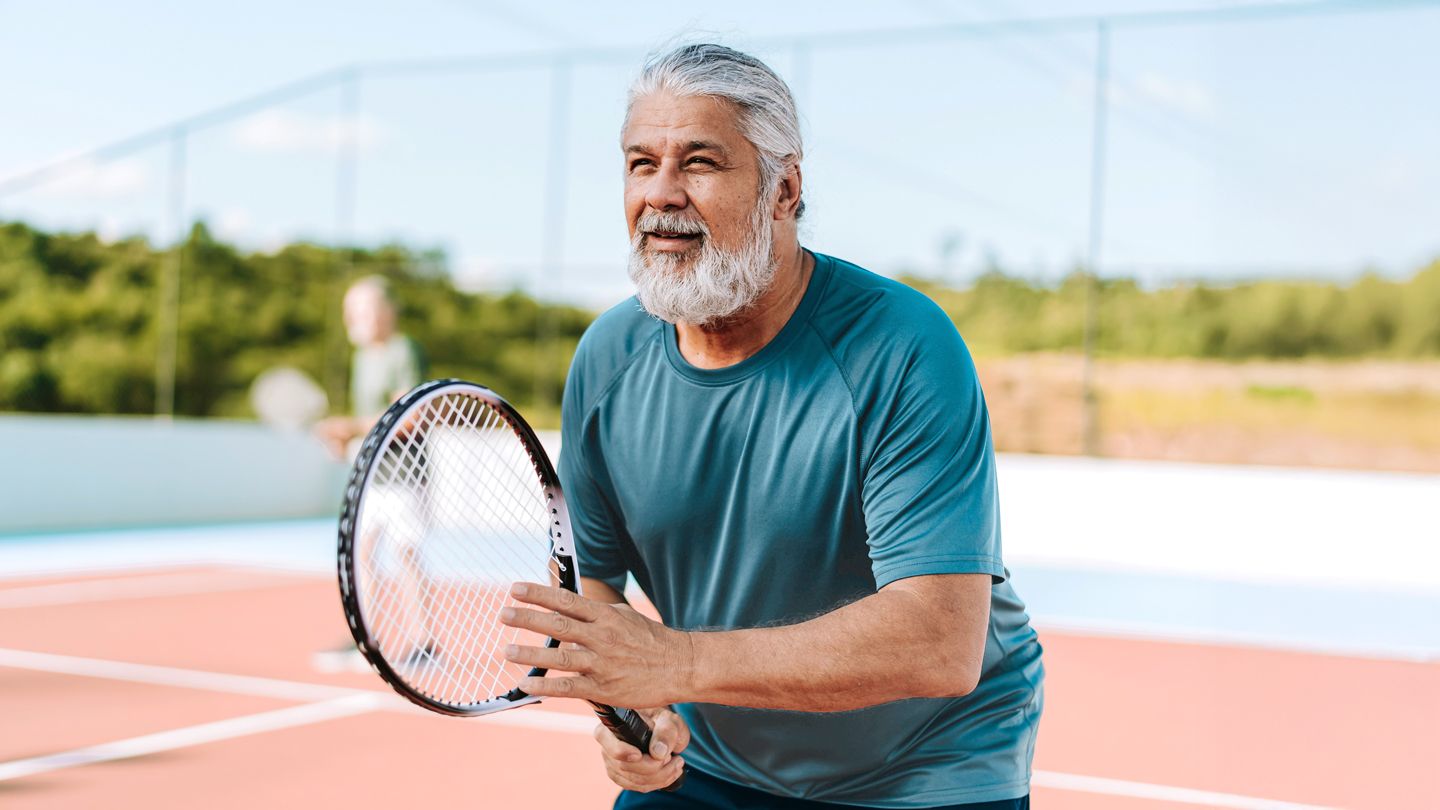There is no guaranteed way to prevent dementia, and certain risk factors (like age, genes, and race) are out of your control.
But healthy behaviors like consistent physical activity offer benefits that may keep your brain sharp. Research shows that cognitive decline is almost twice as common among inactive U.S. adults compared with active adults.
Here are some exercises that may help prevent dementia.
1. Walking
Walking is one of the most straightforward ways to protect your memory, and you don’t have to walk for hours to see brain-health benefits, says Michael Stack, CSCS, a certified strength and conditioning specialist and exercise physiologist in Ann Arbor, Michigan, and a member of the American College of Lifestyle Medicine.
A study found that adults who took just 3,800 steps a day had a 25 percent lower risk of dementia than people who took fewer daily steps. Meanwhile, those who took up to 9,800 steps a day saw even greater brain benefits.
You can walk just about anywhere, including outside, inside your home, at the gym, or at a local mall, says Amal A. Wanigatunga, MPH, PhD, an assistant professor of epidemiology at the Johns Hopkins Bloomberg School of Public Health and School of Medicine in Baltimore.
2. Dancing
All forms of cardio seem to help protect your brain (more on that below), but dancing has some unique perks because it often requires learning choreography. The mental stimulation of practicing new dance steps coupled with the physical activity bolsters connections between brain cells.
In one small study, six months of dancing led to similar improvements in cognitive function in older adults as six months of walking.
You can find beginner-friendly dance classes at your local community center or nearby studios.
3. Other Aerobic Exercises
If you’re not too interested in walking or dancing, there’s good news: You have a nearly endless list of other aerobic exercise options to choose from. That’s because most research examining physical exercises to prevent dementia focuses on aerobic exercise, also called cardio exercise. This is any kind of exercise that gets your heart rate up and makes you breathe heavier.
Research suggests that aerobic exercise is most effective for brain health when it’s done at an intensity of 50 to 75 percent of your VO2max (a measure of how efficiently your body can use oxygen for exercise). To make sure you’re hitting that sweet spot, check in with your body: On a scale of 0 to 10, with 0 being no effort at all and 10 being your maximum effort, how hard are you working? Aim to settle into a range of 5 to 7.
Experiment with a few different forms of cardio to find something you like, such as:
Whichever aerobic activities you choose, try to get at least 150 minutes at a moderate intensity per week, as recommended by the U.S. Department of Health and Human Services (HHS).
4. Strength Training
Most research on exercise and dementia risk focuses on cardio because aerobic workouts are easier to standardize in a study, says Stack, who is also president of the Physical Activity Alliance, an organization that advocates for policy and system changes that promote physical activity. But strength training may offer similar brain-health benefits.
For starters, strength training increases your heart and breathing rate like cardio — especially if you’re doing a circuit or other high-intensity strength routine.
Research suggests strength training may also boost important compounds like brain-derived neurotrophic factor (BDNF), a protein that supports healthy nerve cells in the brain. “BDNF is kind of like Miracle-Gro for the brain,” says Stack.
But more research is needed to fully understand the effects of strength training on BDNF and other brain-protecting benefits, he adds.
Strength training also has so many other potentially life-altering benefits, especially as we age. “If you’re an older adult looking for the most bang for your buck from an exercise modality to improve your cognitive function, reduce your risk of dementia, and improve your overall functional capacity, it’s strength training,” Stack says.
Aim for at least two full-body strength workouts per week, as recommended by the HHS.
5. Daily Activities
You don’t necessarily need to do a traditional workout to support brain health, Stack says. Simply moving more in ways that increase your heart rate, even slightly, has been linked to lower rates of dementia. This can include simple actions like playing with your kids, washing your car, gardening, or cleaning the house, Stack says.
The benefits of performing daily activities become especially pronounced as time marches on. “When you get older, many everyday activities can count as exercise,” Dr. Wanigatunga says. If it has gotten harder for you to keep up with your chores as you age, you’ll actually be expending more energy to change your sheets or clean the kitchen, he explains, turning daily tasks into something closer to a workout.
Increasing your daily movement is a good place to start, especially if you’re not used to exercising regularly, Stack says. Look for opportunities to incorporate more types of activities you enjoy into your daily routine, he says.
6. Yoga
Mind-body practices like yoga can have cognitive health benefits. In people with early stages of dementia, adopting a mindfulness practice like yoga or meditation is linked with better cognitive skills, less depression, and higher quality of life.
One study of 22 older women at risk for Alzheimer’s disease found that those who did yoga classes for 12 weeks didn’t lose as much brain volume as those who did memory training exercises instead. It’s natural to lose some brain volume as we age, which can contribute to cognitive impairment. Slowing down this process is thought to stave off dementia.
But existing studies tend to be small, making it challenging to understand how yoga might impact larger populations and specific groups (including those at risk of dementia). More research is needed to understand if and how yoga may help prevent cognitive decline.
But because the mindfulness aspect of yoga alone seems to slow cognitive decline, incorporating a meditative workout like yoga into your fitness routine while we wait for more research certainly can’t hurt, Stack says.




